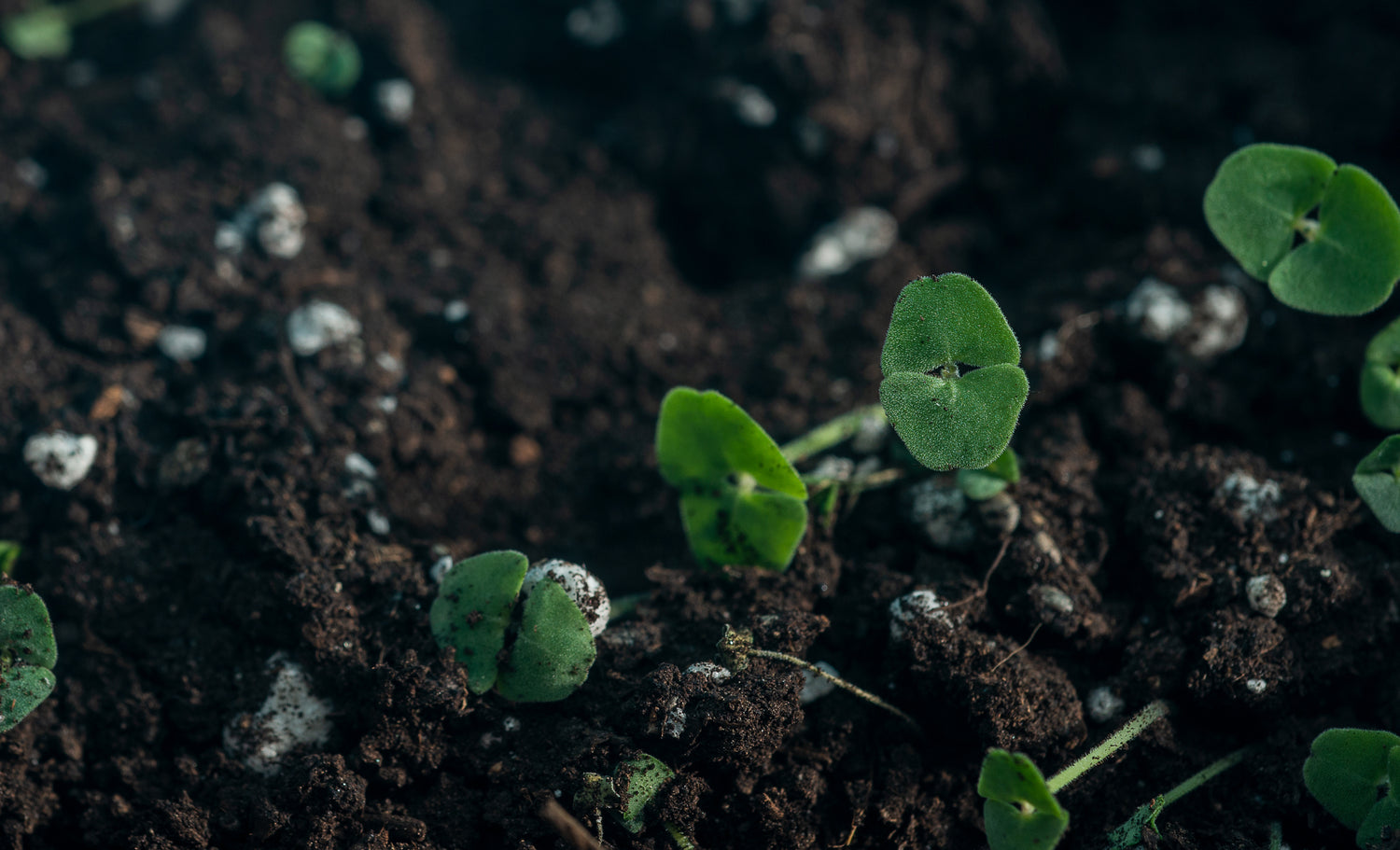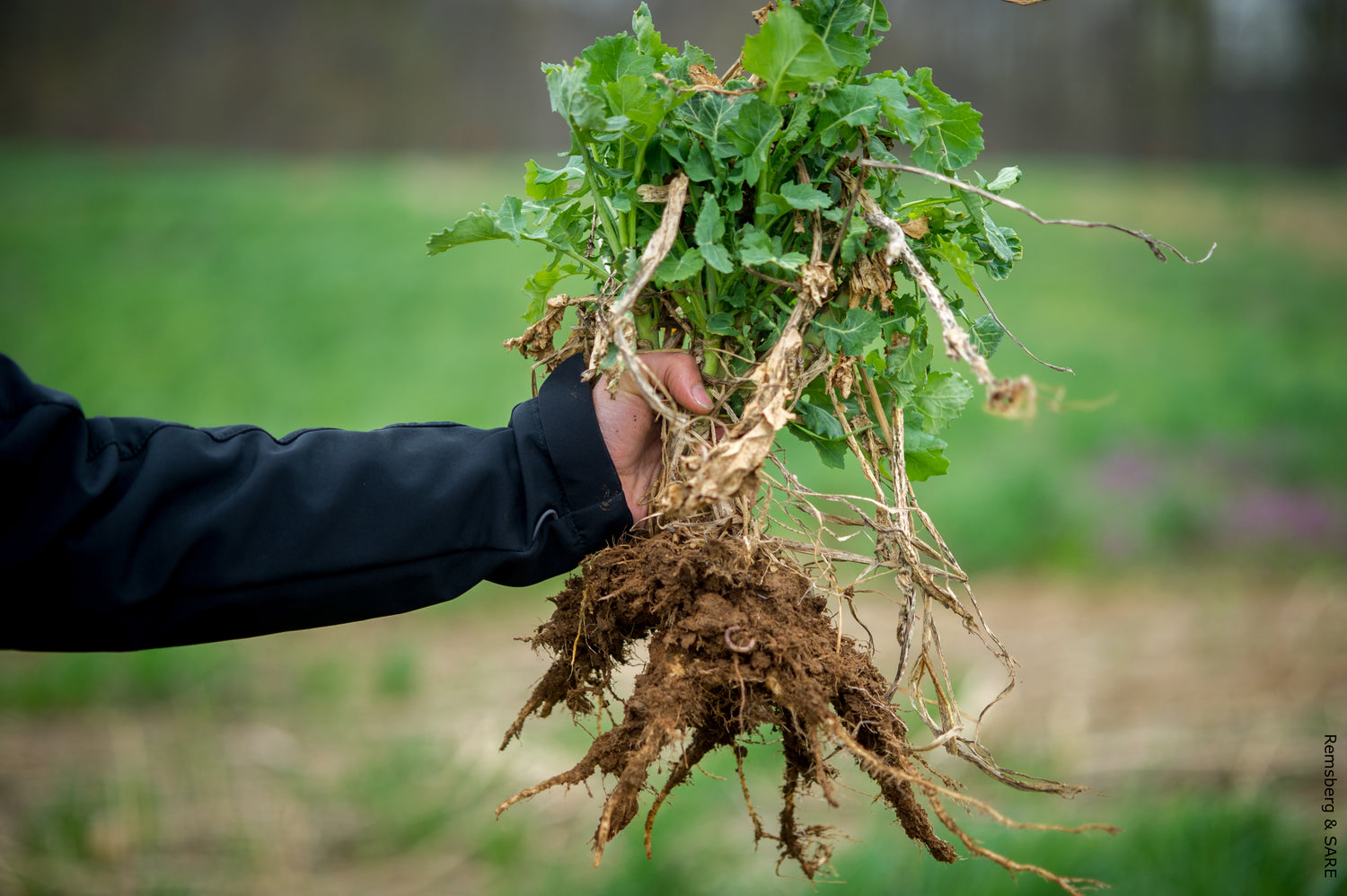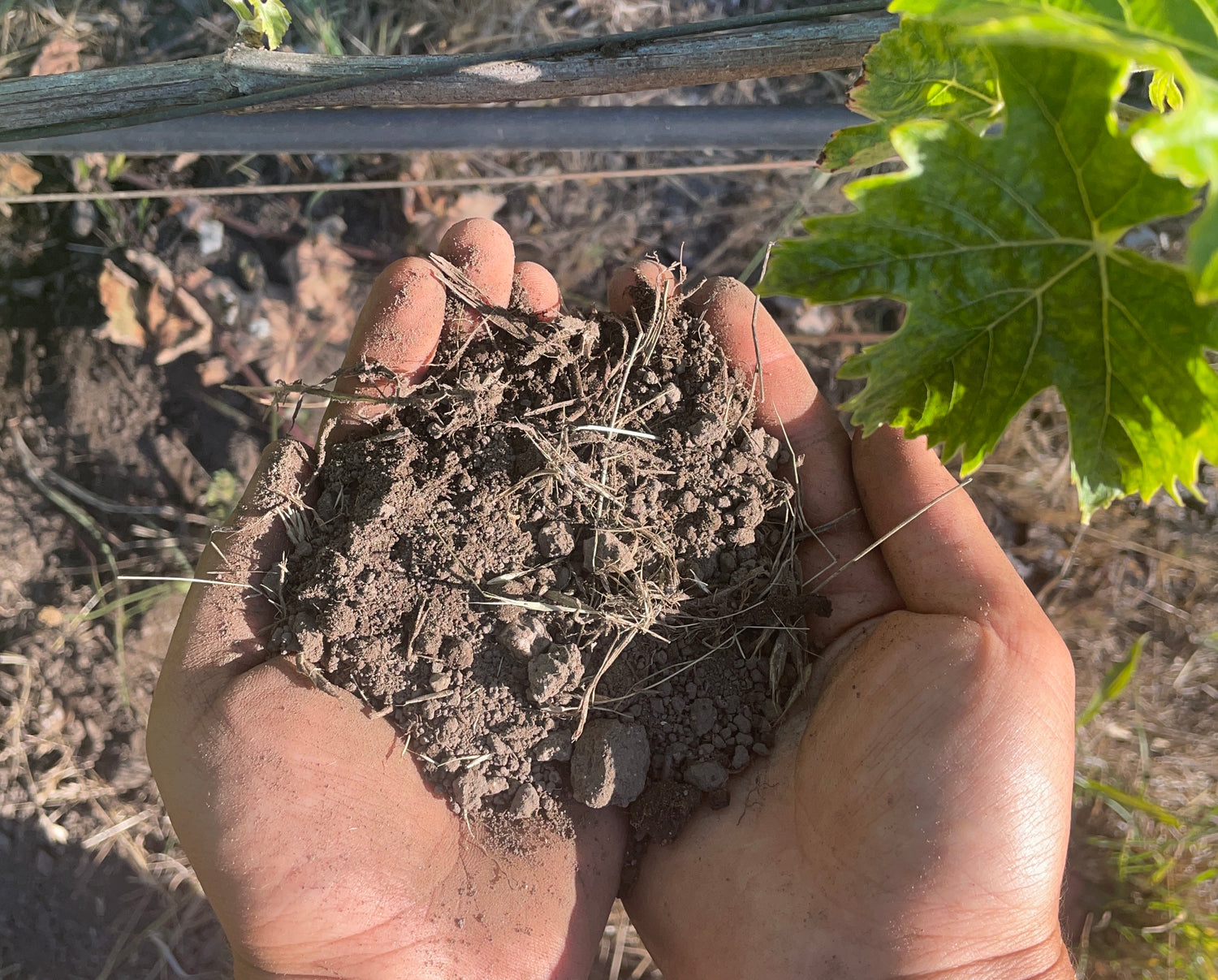California's diverse climate zones and alkaline soil conditions create unique challenges for home gardeners and landscape managers. Understanding the causes of yellowing leaves and implementing proper soil management strategies ensures thriving plants across the state's varied microclimates.
Why Are My Plant Leaves Turning Yellow? Causes and Solutions
Yellow leaves indicate nutrient deficiencies, improper watering, pest damage, or environmental stress disrupting chlorophyll production. The pattern of yellowing reveals the cause: uniform yellowing on older leaves suggests nitrogen deficiency, while yellow tissue between green veins indicates iron deficiency common in alkaline soils.
Understanding Plant Chlorosis and Photosynthesis
Chlorosis refers to the yellowing of plant tissue caused by insufficient chlorophyll production. Chlorophyll captures light energy during photosynthesis, the biochemical process converting sunlight into chemical energy for plant growth. When chlorophyll synthesis is disrupted, leaves lose their characteristic green pigmentation and photosynthetic capacity declines, limiting plant vigor and productivity.
Multiple factors interrupt chlorophyll formation, including inadequate nutrient supply, compromised root function, pathogen infection, and environmental stress. According to Montana State University Extension, the specific pattern and location of yellowing provides critical diagnostic information: uniform yellowing indicates mobile nutrient deficiencies like nitrogen, while interveinal chlorosis points to immobile nutrient problems such as iron deficiency or soil chemistry imbalances.
Nutrient Deficiency Causes and Remedies
Nitrogen Deficiency
Nitrogen serves as the primary component of chlorophyll molecules, amino acids, and proteins essential for plant metabolism. When plants lack adequate nitrogen, chlorophyll synthesis decreases substantially, producing pale yellow foliage. This deficiency typically manifests first on older, lower leaves because nitrogen is a mobile nutrient that plants redistribute from mature tissue to support new growth priorities.
Research from Pennsylvania State University indicates that nitrogen-deficient plants exhibit stunted growth patterns, with younger leaves showing reduced expansion and overall plant tissue displaying yellowish-green coloration. As deficiency progresses, older leaves become uniformly yellow and eventually senesce prematurely.
To correct nitrogen deficiency, apply balanced fertilizers containing readily available nitrogen forms such as ammonium or nitrate. Organic amendments including composted manure, blood meal, fish emulsion, or incorporated cover crop residues provide slow-release nitrogen that minimizes leaching losses. The USDA Natural Resources Conservation Service emphasizes that effective nutrient management follows the 4R principles: applying the right source at the right rate, right timing, and right placement method to optimize plant uptake while minimizing environmental losses to groundwater or surface water.
Accurate diagnosis begins with proper soil testing. Professional soil testing services reveal current nutrient concentrations, pH levels, and specific deficiencies, enabling targeted fertilization strategies rather than generic applications that may create nutrient imbalances or environmental pollution.
Iron Deficiency and Soil pH
Iron deficiency produces distinctive interveinal chlorosis where leaf tissue yellows while veins remain dark green, creating a characteristic striped appearance. This visual pattern occurs because iron is an immobile nutrient that plants cannot easily redistribute from older to younger leaves once incorporated into plant tissue. New growth exhibits symptoms most severely while older leaves may retain normal green coloration.
According to Utah State University Extension, iron chlorosis frequently affects plants growing in alkaline soils with pH above 7.0, where iron converts to insoluble ferric oxide forms unavailable for root uptake. The problem intensifies with excessive soil moisture, elevated phosphorus concentrations, high soil salinity, and cold soil temperatures that reduce biological activity and nutrient solubility.
Treatment approaches vary based on severity and plant type. Chelated iron products, particularly those containing FeEDDHA molecules that remain stable and effective at high pH levels, provide readily available iron for rapid uptake. For established woody plants and shrubs, Utah State University Extension recommends applying a combination of ferrous sulfate and elemental sulfur through soil injection holes placed around the plant drip line, delivering nutrients directly to active root zones.
For plants growing in soils containing free lime, permanent pH modification proves challenging because calcium carbonate continuously neutralizes acidifying amendments. In these situations, foliar applications of iron chelates or ferrous sulfate solutions provide temporary symptom relief by delivering nutrients directly through leaf surfaces, though repeated applications throughout the growing season may be necessary to maintain acceptable foliage color.
Other Micronutrient Deficiencies
Manganese, zinc, and magnesium deficiencies also produce characteristic yellowing patterns. University of Missouri Extension notes that manganese deficiency causes interveinal chlorosis similar to iron deficiency but typically appears on middle-aged leaves rather than newest growth. Magnesium deficiency creates yellowing that begins at leaf margins and progresses inward between veins, initially affecting older leaves because magnesium is mobile within plant tissues.
Water Management and Root Health
Overwatering and Root Oxygen Deprivation
Excessive soil moisture creates anaerobic conditions that suffocate plant roots and disrupt normal metabolic functions. University of Maryland Extension research demonstrates that saturated soil conditions reduce oxygen availability, damage delicate root hairs responsible for water and nutrient absorption, and impair the plant's capacity to transport resources to aboveground tissues. Paradoxically, overwatered plants display symptoms similar to drought stress, including wilting and yellowing of lower leaves, because damaged root systems cannot meet transpiration demands even when surrounded by abundant moisture.
Chronic overwatering also promotes root rot diseases caused by opportunistic Phytophthora and Pythium species. The University of Florida IFAS Extension notes that these soilborne pathogens thrive in saturated conditions and attack compromised root systems, particularly in young plants with limited root development. Infected roots turn brown or black, develop a soft mushy texture, and lose their structural integrity, further reducing the plant's ability to acquire water and nutrients.
To remedy overwatering problems, reduce irrigation frequency and allow the top several inches of soil to dry between watering events. Improve soil drainage by incorporating organic matter such as finished compost or aged bark mulch, which enhances soil structure, increases pore space, and promotes better air and water movement through the root zone. For container plants, ensure pots have adequate drainage holes and remove standing water from saucers promptly after irrigation to prevent root submersion.
Underwatering and Moisture Stress
Insufficient water supply limits nutrient transport through the plant vascular system and reduces photosynthetic activity. Water-stressed plants often develop yellowing leaves as they shed older foliage to reduce overall transpiration demands and conserve limited moisture resources for survival. Apply water deeply but infrequently to encourage extensive root development into deeper soil horizons where moisture remains available longer. A layer of organic mulch around plant bases helps retain soil moisture, moderate soil temperature fluctuations, and suppress competing weeds that would otherwise extract water from the root zone.
Pest and Disease Management
Sap-Sucking Insects
Aphids, spider mites, and whiteflies extract plant sap containing water, dissolved nutrients, and photosynthetic compounds. Heavy infestations cause progressive leaf yellowing, stunted growth, and distorted new growth as continuous feeding depletes plant resources. These pests also excrete sticky honeydew that supports sooty mold development, creating black fungal growth on leaf surfaces that further reduces photosynthetic capacity and aesthetic quality.
Control minor infestations with insecticidal soap or horticultural oil applications, which suffocate soft-bodied insects on contact without leaving persistent residues that harm beneficial organisms. Neem oil provides both insecticidal properties and antifeedant effects that discourage continued pest feeding. Encourage beneficial predators including ladybugs, lacewings, and parasitic wasps that naturally suppress pest populations through predation and parasitism. Avoid broad-spectrum synthetic insecticides that indiscriminately kill beneficial insects and can trigger secondary pest outbreaks by eliminating natural enemies.
Fungal Pathogens
Fungal diseases such as powdery mildew, leaf spot pathogens, and anthracnose cause localized or widespread leaf yellowing depending on infection severity. Infected tissue may display circular spots, irregular blotches, or characteristic white powdery growth depending on the specific pathogen species involved. Fungal spores spread through water splash during irrigation or rainfall, wind currents, and contaminated tools that transfer inoculum between plants.
Remove and destroy infected plant material promptly to reduce pathogen populations and limit disease spread to healthy tissues. Do not compost diseased foliage, as some pathogens survive standard composting temperatures and remain viable to reinfect susceptible plants. Apply appropriate fungicides according to label instructions when cultural practices prove insufficient, targeting applications during early infection stages when pathogens are most vulnerable to chemical intervention. Improve air circulation around plants through proper spacing at planting and selective pruning to create conditions less favorable for fungal establishment and reproduction.
Environmental Stress Factors
Temperature Extremes
High temperatures exceeding optimal ranges for a given species cause heat stress, manifested as scorched leaf margins, yellowing tissue, and overall wilting. Excessive heat increases transpiration rates beyond the root system's capacity to supply replacement water, resulting in temporary wilting during peak heat hours and permanent tissue damage when stress becomes severe. Conversely, cold temperatures damage cellular membranes through ice crystal formation, disrupt essential metabolic processes, and cause leaf discoloration ranging from yellow to purple depending on species sensitivity.
Provide temporary shade during extreme heat events using shade cloth rated at 30 to 50 percent light reduction or through strategic placement of container plants under existing structures. Protect tender plants from frost damage using lightweight row covers or cold frames that trap radiant heat near plant surfaces. Mulching helps buffer soil temperature fluctuations and protects root systems from both excessive heat and cold exposure.
Light-Induced Stress
Sudden exposure to intense sunlight causes sunscald on leaves previously acclimated to shade or indoor conditions. Affected tissue develops yellow or brown necrotic patches where cellular damage has permanently destroyed chloroplasts and cell membranes. Gradually acclimate plants to higher light levels over one to two weeks when moving them from low-light to bright locations, progressively increasing daily light exposure to allow physiological adjustment. Provide afternoon shade for sun-sensitive species during peak intensity hours when ultraviolet radiation and heat stress combine to maximize tissue damage potential.
Soil pH and Nutrient Availability
Soil pH significantly influences nutrient solubility and plant uptake capacity. Most essential plant nutrients achieve optimal availability in slightly acidic to neutral soils ranging from pH 6.0 to 7.0. When pH deviates outside this range, certain nutrients become chemically bound in unavailable forms even when present in adequate total quantities within the soil profile.
In alkaline soils common across California and the western United States, iron, manganese, zinc, and phosphorus availability decreases substantially as pH rises above 7.5. Conversely, in acidic soils below pH 6.0, aluminum and manganese can reach toxic concentrations while calcium, magnesium, and molybdenum availability declines. Montana State University Extension emphasizes that understanding soil pH is fundamental to diagnosing nutrient disorders and implementing effective corrective strategies.
Conduct soil testing through certified laboratories to determine current pH levels, nutrient concentrations, and organic matter content. State university extension services typically offer affordable soil testing programs with detailed interpretation and site-specific recommendations. To raise pH in acidic soils, incorporate agricultural limestone at rates specified by soil test results, selecting calcitic limestone for calcium addition or dolomitic limestone when magnesium is also deficient. To lower pH in alkaline soils, apply elemental sulfur, though pH reduction requires time as soil microorganisms convert elemental sulfur to sulfuric acid through biological oxidation processes.
Preventive Practices for Long-Term Plant Health
Regular monitoring allows early detection of developing problems before they progress to severe stages requiring intensive intervention. Inspect plants weekly for changes in leaf color, growth rate, and signs of pest or disease activity. Maintain detailed records of fertilization schedules, irrigation events, and pest management activities to identify patterns over time and make informed management adjustments.
Implement balanced fertility programs based on soil test results and specific crop nutrient requirements. The USDA Natural Resources Conservation Service recommends avoiding excessive fertilization, which creates nutrient imbalances, increases plant disease susceptibility, promotes excessive vegetative growth at the expense of reproductive development, and contributes to environmental pollution through nutrient runoff and leaching. Organic matter additions improve soil physical properties, enhance water retention capacity, increase cation exchange capacity, and provide slow-release nutrients through gradual decomposition.
Practice proper irrigation techniques that supply adequate moisture without causing waterlogging or root oxygen deprivation. Water deeply but infrequently to encourage extensive root development into deeper soil horizons where moisture reserves remain available during dry periods. Adjust irrigation frequency based on current weather conditions, plant growth stage, and soil texture characteristics. Sandy soils require more frequent watering than clay soils due to fundamental differences in water-holding capacity and drainage rates.
Maintain optimal growing conditions by selecting plant species and cultivars suited to your specific climate zone, soil type, and available light levels. Poorly adapted plants require intensive management inputs and remain inherently more susceptible to stress-related problems throughout their lifespan. Choose disease-resistant cultivars when available to reduce dependency on chemical interventions and simplify long-term maintenance requirements.
Employ crop rotation in vegetable gardens to interrupt pest and disease cycles. Many soilborne pathogens and insect pests exhibit specific host ranges and decline when their preferred hosts remain absent for one or more growing seasons. Companion planting strategies can help deter certain pests through physical barriers, confusing olfactory cues, or chemical repellents produced by aromatic plants.
Remove dead, diseased, or damaged plant material promptly to eliminate pathogen reservoirs and pest habitat. Fallen leaves and spent flowers harbor pathogens and provide protected overwintering sites for pest populations that reinfest plants the following season. Sanitize pruning tools with 10 percent bleach solution or 70 percent alcohol between cuts when working with diseased plants to prevent pathogen transmission. Regular pruning improves air circulation around dense foliage, reducing humidity levels that favor fungal development and spore germination.
Conclusion
Yellow leaves serve as visual indicators that plants are experiencing physiological stress from nutrient deficiencies, improper water management, pest infestations, diseases, or adverse environmental conditions. Successful diagnosis requires careful observation of yellowing patterns, identification of affected plant parts, and evaluation of growing conditions and management history. By understanding the specific underlying causes and implementing targeted remedies based on peer-reviewed research and university extension recommendations, gardeners can restore plant vigor and maintain healthy, productive landscapes. Preventive care through appropriate site selection, soil management following test results, balanced nutrition programs, and regular monitoring provides the foundation for long-term plant health and substantially reduces the need for corrective interventions.
Sources
- Pennsylvania State University Department of Plant Science. Nitrogen Deficiency. https://plantscience.psu.edu/research/labs/roots/methods/methods-info/nutritional-disorders-displayed/nitrogen-deficiency
- USDA Natural Resources Conservation Service. Nutrient Management. https://www.nrcs.usda.gov/resources/guides-and-instructions/nutrient-management
- Utah State University Extension. Preventing and Treating Iron Chlorosis in Trees and Shrubs. Kuhns, M. and Koenig, R. https://extension.usu.edu/forestry/trees-cities-towns/tree-care/preventing-iron-chlorosis
- Utah State University Extension. What is Iron Chlorosis and What Causes It? https://extension.usu.edu/forestry/trees-cities-towns/tree-care/causes-iron-chlorosis
- University of Maryland Extension. Overwatered Indoor Plants. https://extension.umd.edu/resource/overwatered-indoor-plants
- University of Florida IFAS Extension. Phytophthora Foot Rot, Crown Rot, and Root Rot. https://edis.ifas.ufl.edu/publication/CG009
- Montana State University Extension. What Does Yellowing or Chlorosis Tell Us About Nutrient Deficiencies? https://apps.msuextension.org/montguide/guide.html?sku=MT202205AG
- University of Missouri Extension. Diagnosing Nutrient Deficiencies. https://ipm.missouri.edu/meg/2011/6/Diagnosing-Nutrient-Deficiencies/












